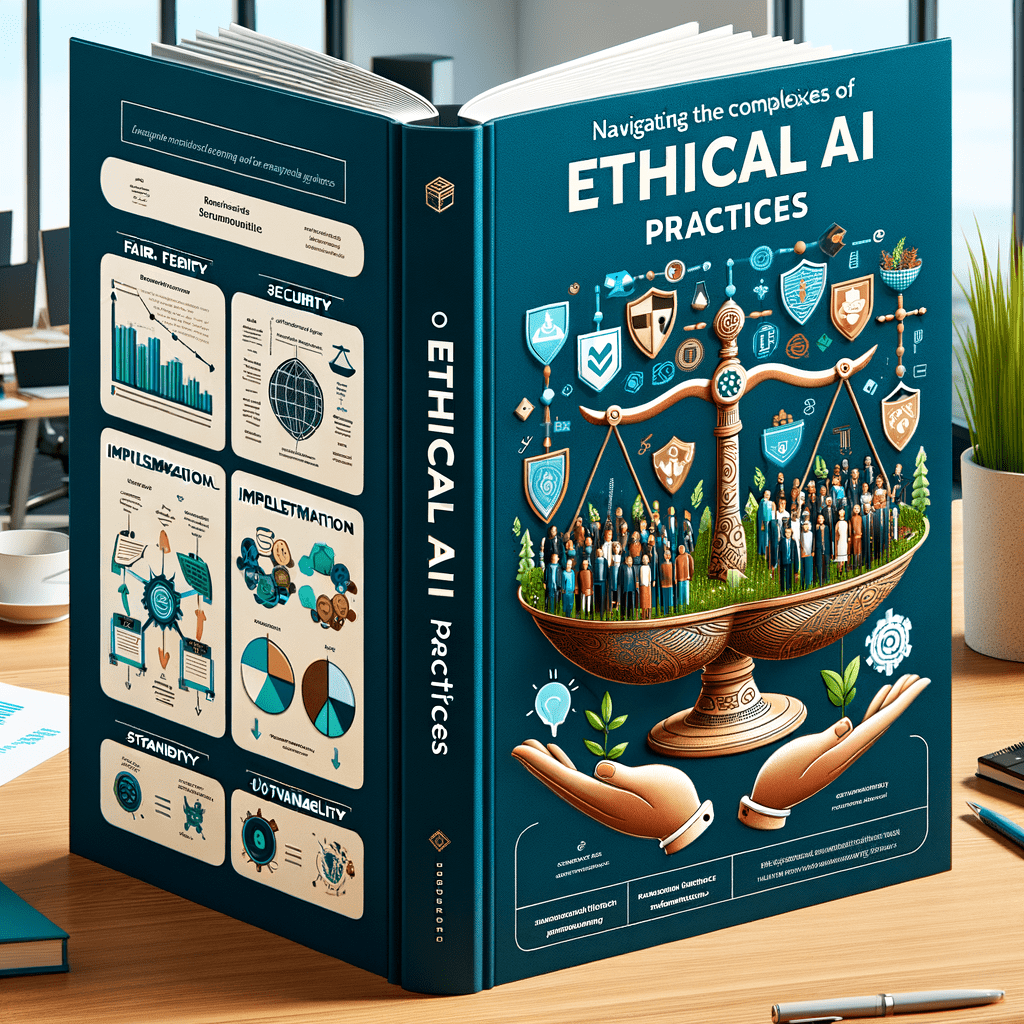As artificial intelligence (AI) rapidly transforms businesses, small to mid-sized business owners are understandably thinking about ethical AI practices. If you feel uncertain about how to apply this technology responsibly, this guide will help you understand the principles of responsible AI.
The Why Behind Ethical AI
Ethical AI isn’t just a trend; it’s a necessity. The Cambridge Analytica scandal demonstrated why ethical AI practices are crucial. Over 50 million Facebook users had their data misused, creating a massive privacy crisis.
This incident highlighted the potential harm of misusing AI and solidified the need for stricter ethical guidelines in AI development.
Understanding the Core Principles of Ethical AI Practices
Ethical AI revolves around key guidelines. While not yet legally enforced everywhere, these responsible AI principles serve as your ethical compass.
Transparency and Explainability
Transparency and explainability mean an AI system’s decisions must be clear and understandable. If AI impacts someone, they deserve to know why.
Fairness and Non-discrimination
AI systems must treat everyone equally, avoiding discrimination against any group. This fairness is essential to prevent real-world harm.
Privacy and Data Protection
Ethical AI deeply respects user privacy and emphasizes ethical data sourcing. This involves data security and respecting individual control over their information.
Building Ethical AI: A Practical Approach
Implementing ethical AI principles requires consistent action, from design through oversight of AI technologies.
Integrating Ethics in AI Development
Actively incorporate ethical considerations throughout the AI lifecycle.
- During design, prioritize fairness, transparency, and privacy.
- In the build and training phases, ensure ethical data sourcing and handling. Be mindful of potential biases in your datasets.
- When deploying AI, monitor its performance and impact. Maintain human oversight for necessary corrections.
Maintain transparency with users about how your AI applications function. This helps foster trust and accountability in AI systems.
Establishing Clear Accountability
Accountability frameworks address AI failures and ensure ethical missteps have consequences. Implement oversight mechanisms like review boards or internal guidelines.
Promoting responsible AI practices company-wide creates a culture of ethical AI development.
The Future Landscape of Ethical AI Practices
As AI evolves, new ethical challenges emerge.
Emerging Challenges in Ethical AI
Consider issues like deepfakes damaging reputations and AI’s impact on the job market. McKinsey estimates that automation could transform 20% of jobs by 2030.
Understanding how AI influences job sectors is vital, requiring ongoing dialogue about responsible implementation of ethical AI practices.
Global Initiatives and Regulations
Many organizations recognize the need for ethical AI regulations. The EU, Singapore, and Canada are developing their own AI ethical standards. UNESCO’s Recommendations on the Ethics of Artificial Intelligence provide global benchmarks.
These global initiatives promote human-centered AI, address diverse needs, and ensure human control over AI technologies. This represents a significant step toward responsible AI practices worldwide.
Real-World Ethical AI Practices
Google demonstrates ethical AI practices through its AI Principles. Microsoft emphasizes six core AI ethics ideals focused on trustworthy development.
IBM prioritizes trustworthiness with accountability, continuous monitoring, and transparency in their AI projects. Adopting ethical AI is important for businesses of all sizes, not just large corporations.
Entrepreneurs also champion ethical AI, combining innovation with responsible AI practices. This integration of core values in AI technologies contributes to a more equitable and sustainable future.
Balancing Innovation with Responsibility in Ethical AI Practices
The rapid pace of AI raises important questions. Will it benefit humanity, or just become a race for implementation? Balancing innovation with ethical considerations regarding societal well-being is critical.
Organizations must prioritize responsible AI practices, not treat them as secondary. This requires measuring ethics performance through continuous efforts to improve fairness and transparency.
As innovation and ethics intersect, AI offers life-altering potential in medicine, research, and daily life. However, upholding ethical AI practices is crucial for truly serving society.
Ethical AI principles guide AI development toward systems that support fairness, data privacy, transparency, and inclusivity.
FAQs about ethical ai practices
What are the 5 ethics of AI?
Five core ethics of AI are accountability, transparency, fairness, human-centeredness, and privacy/security. Accountability ensures responsibility for AI actions, while transparency makes its workings clear.
Fairness protects against bias. Human-centered AI prioritizes human welfare. Privacy and security safeguard data and user rights.
What is the ethical approach to AI?
An ethical approach to AI integrates ethical considerations at every stage. This includes design, development, and deployment, along with monitoring real-world effects.
It also involves continuous evaluation and adaptation to the evolving landscape of AI and machine learning.
What are the 3 big ethical concerns of AI?
Three major ethical concerns are job displacement, algorithmic bias, and privacy violations. Algorithmic bias leads to unfair results. Job losses due to AI-driven automation are a growing worry. Privacy breaches occur through misuse of personal data.
What is the most ethical way to use AI?
Ethical AI use involves continuous feedback, ethical performance measurement, stakeholder engagement, and focus on positive societal impact. Measurable ethical values promote accountability.
This includes aligning real-world AI applications with these values and considering their potential impacts.
Conclusion
Ethical AI practices are more than a checklist. They’re core values that shape AI development and deployment. Embracing ethical AI principles enables positive impact from transformative technology. Building ethical AI fosters a safer and more equitable digital world. It’s about fostering innovation while protecting human dignity and fundamental principles.



